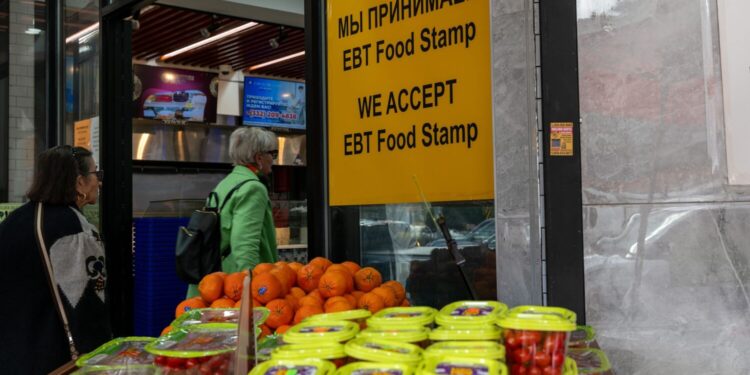Roughly 2.4 million Americans, including families with children, are expected to lose access to food stamp benefits each month after Republican-led changes expanded work requirements to a wider group of recipients, according to a Congressional Budget Office (CBO) analysis released Monday.
The new law, a centerpiece of former President Donald Trump’s economic agenda, broadens existing rules so that, for the first time, certain parents of dependent children must meet work requirements to receive Supplemental Nutrition Assistance Program (SNAP) benefits. These changes come as grocery prices remain elevated and food banks struggle to meet rising demand.
The final legislation, signed last month, is less sweeping than the version initially passed by the House earlier this year, which would have mandated work requirements for parents of children as young as seven, a move the CBO previously estimated would cut average monthly enrollment by 3.2 million. The enacted law instead applies the rule to parents of children ages 14 and older, requiring at least 80 hours per month of work, volunteering, or job training.
Other groups now subject to the mandate include adults aged 55 to 64, veterans, people experiencing homelessness, and former foster care youth, though Native Americans are exempt. The law also tightens restrictions on states seeking waivers from these requirements during economic downturns. The CBO estimates that about 300,000 adults living with children 14 or older will lose benefits on average each month.
A separate measure will require certain states, those with payment error rates of 6% or higher, to cover between 5% and 15% of SNAP benefit costs starting in 2028. The CBO warns this could push some states to scale back eligibility or even leave the program entirely, potentially reducing or eliminating benefits for another 300,000 people monthly and cutting subsidies for around 96,000 children in child nutrition programs.
The House’s earlier proposal would have imposed a larger state cost share, which the CBO projected would affect 1.3 million people per month and 420,000 children.
Beyond SNAP, the CBO reports that the law’s changes to Medicaid and the Affordable Care Act will also have significant impacts. For the first time, some Medicaid recipients, including parents of children aged 14 and above, will face work requirements, contributing to a projected 5.3 million more uninsured Americans by 2034. Combined with other provisions, the package is forecast to leave 10 million more people without health coverage in less than a decade.
Critics say the policy changes disproportionately harm low-income households. Many SNAP participants already work, but inconsistent hours or administrative hurdles could still jeopardize their benefits. Gina Plata-Nino, interim SNAP director at the Food Research & Action Center, said families “will be hungrier” and in worse health without this assistance, noting that these cuts arrive as more people are also set to lose their health insurance.
The CBO’s income analysis underscores the uneven effects: households earning less than $24,000 annually are projected to see average incomes fall by $1,200 per year between 2026 and 2034, a 3.1% drop largely driven by reduced benefits. Middle-income households, with about $86,000 in earnings, would gain roughly $800, or 0.8%. The wealthiest Americans, averaging $700,000 a year, stand to see a $13,600 boost, about 2.7%.
University of Michigan economist Justin Wolfers summarized the disparity on X, noting that the wealthiest 10% will capture 63% of the package’s benefits, while the bottom 60% will see just 4%.







